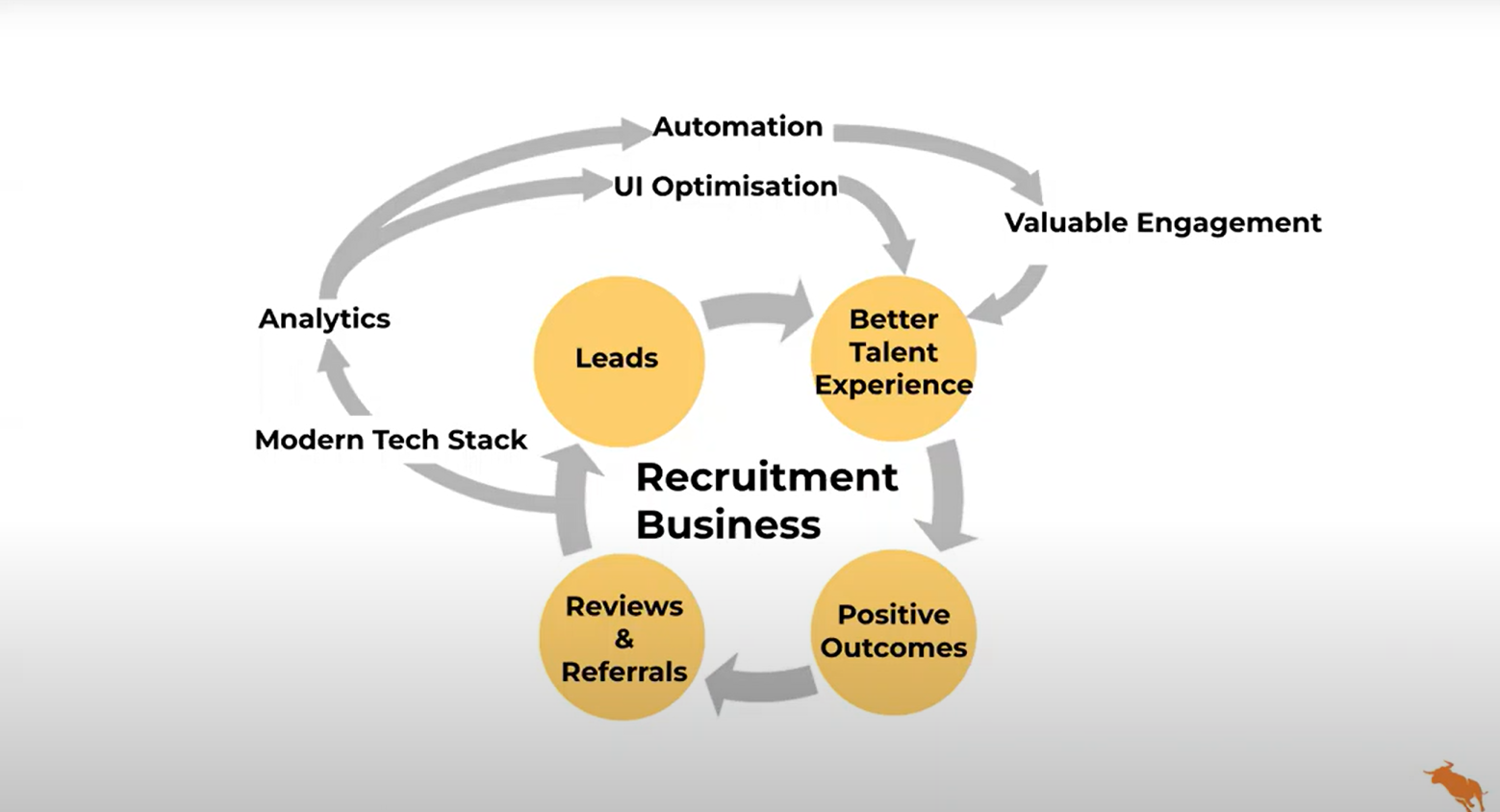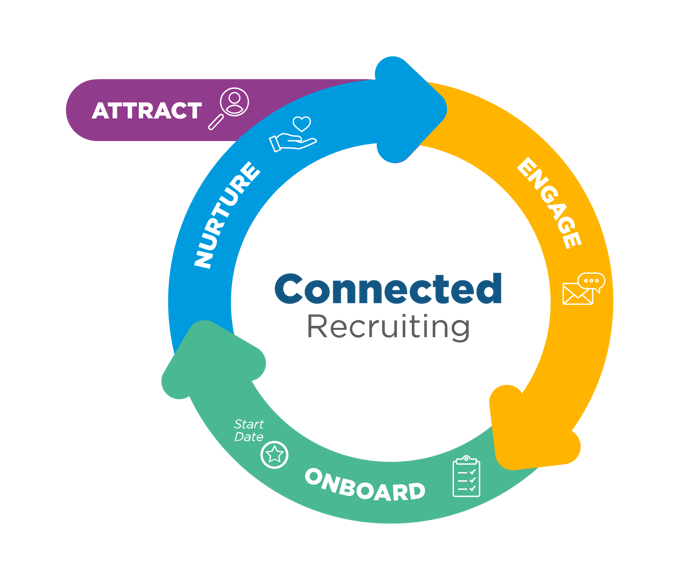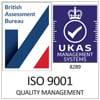In recent years, the UK recruitment industry has seen a shift in how candidates approach the recruitment process with the entry of more technologically adept talent into the job market. Amid mounting concerns about a shortage of qualified candidates, there is a growing focus on candidate engagement.
In this webinar, recruitment industry experts examine Bullhorn’s Connected Recruiting methodology and explore how combining it with technology can address talent scarcity and reduce the ever-increasing costs of talent acquisition.
Hosted by Andre Mileti, Director of Product Marketing at Bullhorn, the webinar featured Bullhorn Marketplace Partners David Mercer of Daxtra, Alex Roberts of Kyloe, John Russell of Staffing Future, and Bullhorn customer Sarah Gibson of Cherry Professional.
Why is Connected Recruiting important?
In today's rapidly evolving recruitment world, the values and priorities of candidates have undergone a massive shift. While candidates of the past prioritised job stability, a steady income, and long-term employment, today's jobseekers seek speed, flexibility, choice, and happiness. As a result, experience and happiness have become the buzzwords as candidates get younger and are used to the way how technology has simplified their lives - raising their expectations accordingly.
The recruitment industry must adapt to these changing values and priorities to remain competitive. The retail, travel, and finance industries have already worked on perfecting their digital customer experiences, and recruitment agencies now compete with the seamless experiences offered by social media platforms like Instagram, Facebook, and Twitter.
The recruitment industry must rise to meet the high expectations of today's talent market, offering personalised, omni-channel engagement and flipping traditional recruitment practices on their head to attract and retain top talent. By embracing the best practices of other industries, the recruitment process can become more agile, enjoyable, and effective for both recruiters and candidates. In short, the recruitment industry must evolve to meet the changing needs of modern jobseekers.
What is the consumerisation of employment?
The rise of new factors is causing what is often called the consumerisation of employment, where candidates now approach their search for employment with a consumer mindset.
Andre Mileti from Bullhorn explained, "Talents are abandoning shopping carts in terms of applications at the speed in which they abandon a shopping cart online for hopefully better deals or faster shipping or bonus points."
As a result, candidates are more likely to evaluate employment opportunities based on their overall experience, including the recruitment process, onboarding, and ongoing work experience. They expect a seamless and enjoyable digital experience, personalised engagement, and more flexibility in terms of work arrangements.
David Mercer from Daxtra added "Automating tasks like having to fill out application forms multiple times can substantially improve the candidate experience. These small factors may seem insignificant, but they can dramatically impact the candidate's perception of the recruitment process."
By leveraging automation, recruiters can gain valuable insights and feedback that can be used to enhance the candidate experience further and improve overall recruitment outcomes.
What is the evidence behind Connected Recruiting?
Last year, Bullhorn surveyed more than 2,000 temporary workers to understand their motivations for working with agencies and their likes and dislikes about the recruitment process.
- 66% of candidates dropped the opportunity because the process took too long
- 1 in 3 say their recruiter wasn’t proactive about opportunities when one fell through
- Only 8% cited 'positive recruiter interaction' as the reason they choose to work for a firm
The fact that 66% of candidates dropped opportunities because of a prolonged or inefficient recruitment process suggests that the length and complexity of the process recruitment process itself may be significantly contributing to the talent shortage. This means that agencies must shift their focus from simply attracting candidates to engaging and retaining them throughout the recruitment process.
When asked if the results were surprising Sarah Gibson from Cherry Professional explained, "Although the results are incredibly disappointing, it’s not surprising. The good thing is that we now have automation and tech to improve the situation, whether that’s help with notifications or reminders or directly communicating with clients and candidates."
Furthermore, It is important to note that 1 in 3 jobseekers felt that their recruiter was not proactive, meaning that a significant portion of candidates were not satisfied with the level of support they received from their recruiter. In today's competitive job market, recruiters must be proactive in providing opportunities to jobseekers.
David Mercer from Daxtra added "Relevant jobs should also be automated and instantly presented to candidates or recruiters. As this will improve candidate experience."
By implementing an appropriate tech stack that comprises automation, search and match technology, and a good strategy, we can alleviate the recruiter's workload and improve engagement between candidates and consultants.
What is Connected Recruiting?
Connected Recruiting is a methodology developed by Bullhorn to combine the power of technology with the right engagement strategies and industry best practices to transform how your team engages with candidates and clients.
Andre Mileti from Bullhorn emphasises that "The recruitment industry is experiencing a paradigm shift, and we have realised that experience truly matters. The data strongly supports this notion, and we recognise that talent drives this shift. As agencies and recruiters, we are responsible for enhancing the recruitment process by creating more significant and impactful moments that resonate with our talented candidates."
What is the flywheel concept?
The flywheel concept is a business approach that focuses on creating a continuous cycle of attracting and delighting customers to build long-term relationships. Unlike the traditional sales funnel, which ends with the sale, the flywheel approach aims to create a virtuous cycle of customer acquisition and retention.
This involves attracting customers and providing them with a positive experience that delights them and encourages them to continue purchasing from the company and spreading the word to others. The flywheel concept emphasises the importance of building long-term relationships with customers rather than just focusing on short-term transactions.
The flywheel is about building on small successes that accumulate over time, creating a connected experience that generates momentum in the hiring process. As these small successes add up, they eventually reach a point where they start to generate a positive force in the form of good ratings, reviews, and referrals. This momentum leads to organic growth that seems to happen almost automatically.
Major companies like Amazon have built their entire business on the flywheel concept. Therefore, the recruitment industry would do well to focus on and adopt this concept and create a talent-centric flywheel to improve talent engagement.
This picture illustrates how Amazon's flywheel would look if it ran as a recruitment business. 
How Amazon's flywheel would look if it ran as a recruitment business. How to Place More Candidates with Connected Recruiting, Bullhorn
Amazon’s primary focus would be delivering an exceptional talent experience, generating positive reviews and recommendations, and producing organic leads. In addition, they would invest in a modern technology stack with analytics and automation to optimise every aspect of the recruitment process and enhance the talent experience.
When discussing how close the recruitment industry is to Amazon's flywheel, David Mercer from Daxtra responded that progress is happening, even though the adoption rate for candidate engagement strategies is still relatively low. Many industry professionals prioritise capturing high-quality data as a prerequisite for effective candidate engagement and nurturing. However, capturing good data is not enough, as leveraging it and transforming it into valuable insights is equally crucial.
How do you develop the Connected Recruiting flywheel?

Bullhorn: An Introductory Guide to Connected Recruiting
To develop a talent experience flywheel, it's crucial to understand how to attract and engage candidates, provide excellent experience, and retain their loyalty, even after a successful placement. This involves a continuous process of redeployment, nurturing, and engagement with consumer-grade experiences that make a lasting impression. By delivering an exceptional experience throughout the recruitment process, agencies can create a strong and lasting connection with their talent.
John Russell, EMEA MD at Staffing Future commented "To drive truly Connected Recruiting, recruiters need technology to be working seamlessly together to create a consumer grade experience. An integrated, conversion-focused website design offers a frictionless candidate experience, and will help you nurture talent communities. Your central source of truth is Bullhorn. Your recruiters can enhance their candidates' brand experience with technology like Bullhorn, Bullhorn Automation and Daxtra integrated with your website - passing data into Bullhorn to improve their user experience."
Alex Roberts from Kyloe explained that "Once the candidate is in your database, it’s important to start to build that trust through communication. So, engaging with candidates by sending them content like blogs, surveys, key dates like birthdays, and maybe their first birthday with you. By keeping engaged with them, you can always have up-to-day information."
- Make sure you Attract top talent and keep them engaged from the beginning, so you don't miss out on promising candidates.
- Use targeted messaging and opportunities to Engage the talent you already have in your database and maximise their potential.
- Provide a smooth and positive Onboarding experience to new hires, from their first day on the job to the end of their first few weeks.
- Keep Nurturing your talent even after they're on board to improve your redeployment rate and increase the likelihood of getting referrals.
Where do you start with Connected Recruiting?
Connected Recruiting is the process of using technology and data to establish and maintain strong connections with candidates, recruiters, and other teams in the hiring process. To get started with Connected Recruiting, you must have the right tools, technology, and procedures in place.
Some key points to consider when implementing a Connected Recruiting strategy:
- Good Data: To effectively connect with candidates, you need accurate and up-to-date information about their skills, experiences, and preferences. This requires collecting and managing data in an organised way.
- Good Tech Stack: Connected Recruiting relies heavily on technology, so you must invest in a tech stack that can support your strategy to improve your talent engagement.
- Candidate-Centric Approach: Connected Recruiting is all about building relationships with candidates, so it's important to adopt a candidate-centric approach that puts their needs and preferences first. This may involve personalising communication and engagement efforts, leveraging social media and other channels to connect with candidates where they are, and offering a seamless, digital-first candidate experience.
- Data Analytics: To measure the effectiveness of your Connected Recruiting efforts, you need to track and analyse relevant metrics. This may include data on candidate engagement, time-to-hire, quality-of-hire, and other key performance indicators.
- Cross-Functional Collaboration: Connected Recruiting requires collaboration across different teams and functions, such as HR, Marketing, IT, and Data Analytics. To ensure success, it's important to establish clear communication channels and workflows that support cross-functional collaboration and alignment.
Sarah Gibson from Cherry Professional highlighted "When you’re trying to change your business, whether it’s a small process or digital transformation, you need to make sure that your people are on board with you and are on the journey with you."
Implementing a Connected Recruiting strategy requires a combination of good data, a strong tech stack, a candidate-centric approach, data analytics, and cross-functional collaboration. By prioritising these elements, you can build a more effective and efficient hiring process that delivers better outcomes for candidates and your organisation.
If you want to find out more about how Daxtra can help with your Bullhorn Connected Recruiting journey, do get in touch.



